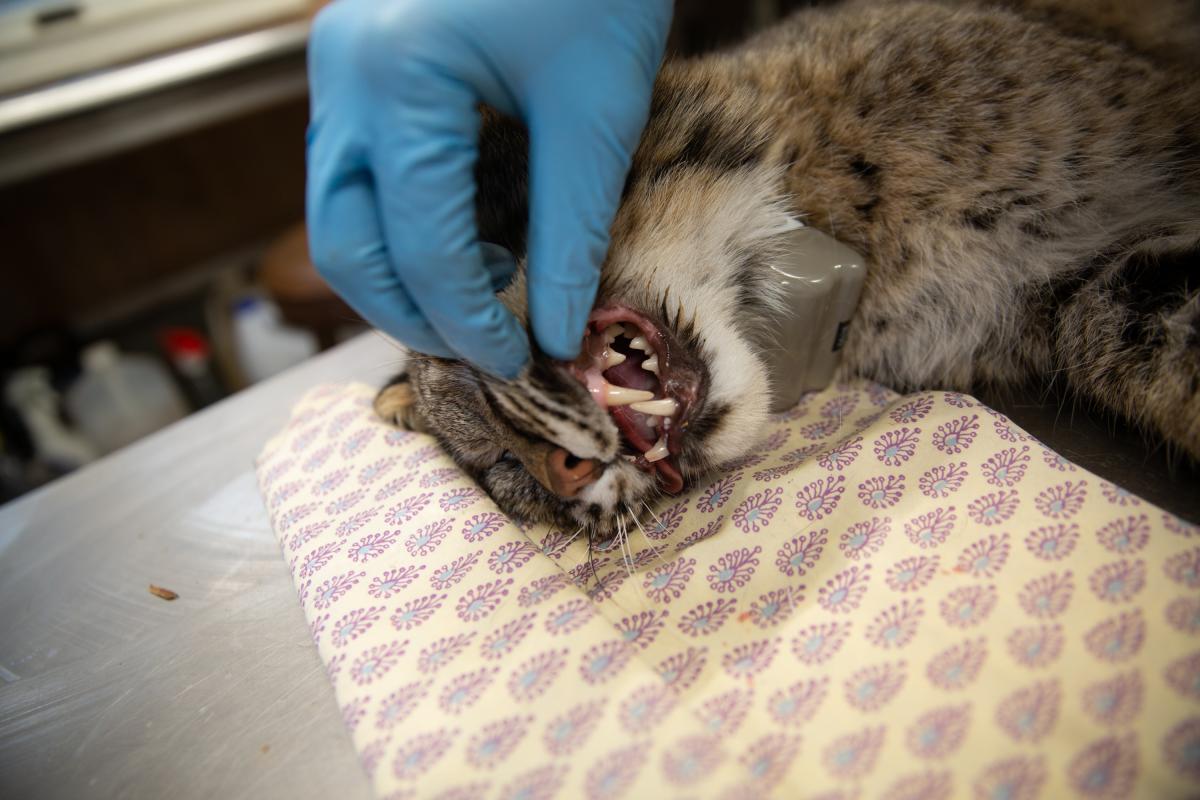What Are The Secrets Of Connecticut’s Bobcats?

The bobcat’s teeth following the procedure. The cat was outfitted with a GPS collar, which will ping location data on the cat. Photo by Patrick Skahill for Connecticut Public Radio
Inside a lab in northwest Connecticut is a bobcat. Its bright eyes and black-tufted ears are separated from me only by the metal grill of a large carrier. She’s sleepy, but waking up.
That morning, Jason Hawley, a wildlife biologist with the Connecticut Department of Energy and Environmental Protection, got a phone call from a coyote trapper who’d accidently caught this bobcat.
Lately, Hawley has been putting the word out to trappers: if you catch a bobcat, don’t release it. Instead, call his team.
“We sent two people over to Lebanon. They drugged the cat. Tranquilized it. Put it in our carrier that we use,” Hawley said. “They stay pretty calm in there.”
Hawley is with the Connecticut Bobcat Project. It’s a study tracking bobcats all over the state.
